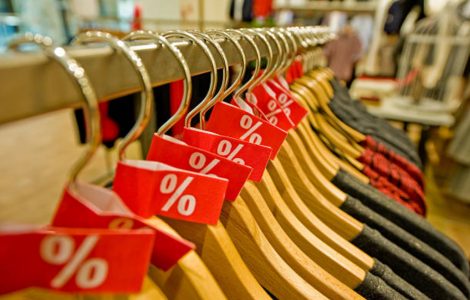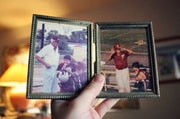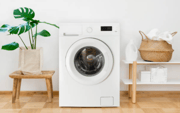Everyday shopping mistake puts you at risk of shocking skin disease
By
Gian T
- Replies 1
Thrifting and buying second-hand clothes has become a favourite pastime for many Aussies—especially for those of us who love a bargain, want to stretch our dollars further, or are keen to do our bit for the environment.
But while op shops and vintage stores are treasure troves of unique finds, many shoppers overlook a hidden danger lurking in their racks.
Recently, a young Indonesian man made headlines after sharing his harrowing experience with a rare skin disease he claims he caught from wearing unwashed second-hand clothes.
The man, known as @onenevertwhoo_one on TikTok, posted videos showing his face and neck covered in clusters of small, raised bumps.
His diagnosis is a Molluscum contagiosum—a viral skin infection that’s as unpleasant as it sounds.
Molluscum contagiosum is caused by a poxvirus and is more common than you might think.
It spreads through direct skin-to-skin contact, contaminated objects (like towels or clothing), and sometimes even through sexual contact.
The infection causes small, round, skin-coloured bumps that can be itchy and unsightly.
While it’s not life-threatening and often clears up on its own, it can linger for months—or even years—especially if you have a weakened immune system.
For most people, the infection is mild, but scratching the bumps can cause the virus to spread to other parts of the body or to other people.
Treatment options include topical medications like potassium hydroxide, salicylic acid, benzoyl peroxide, and tretinoin, which can help speed up recovery.
You might be wondering: how can a simple shirt or pair of pants make you sick?
According to Dr Primrose Freestone, a senior lecturer in Clinical Microbiology at the University of Leicester, second-hand clothes can be 'swimming in germs.'
Unwashed garments may carry bacteria, fungi, or viruses left behind by the previous wearer—including those that cause vomiting, diarrhoea, athlete’s foot, ringworm, and, yes, molluscum contagiosum.
'Pathogens can cling to unwashed fabrics and infect anyone who wears them,' Dr Freestone warned.
Clothes can act as a reservoir for infectious diseases, making it crucial to clean them thoroughly before use.
As we age, our immune systems naturally become less robust, making us more susceptible to infections.
Seniors, in particular, should be extra cautious when handling second-hand items, as even mild infections can take longer to heal or lead to complications.
Don’t let this scare you away from your favourite op shop! With a few simple precautions, you can enjoy thrifting safely:
Always wash second-hand clothes before wearing them, even if they appear clean, using a good quality detergent and washing at around 60°C to kill most bacteria, fungi, and viruses.
For the first wash, keep thrifted items separate from regular laundry to avoid cross-contamination.
If a hot wash isn’t possible, soak the clothes in hand-hot water with antibacterial detergent for two to three hours before washing as usual.
Consider adding a laundry disinfectant if your washing machine doesn’t reach high temperatures, and ensure the clothes are completely dry before wearing or storing them to prevent mould and bacteria growth.
Although molluscum contagiosum is rare, second-hand clothes can also carry other risks, including head lice or scabies, which can survive briefly on clothing and bedding, fungal infections like athlete’s foot or ringworm that thrive in warm, damp conditions, and allergens such as dust mites, pet dander, or pollen from previous owners, which can trigger allergies.
Despite these risks, buying second-hand is still a fantastic way to save money and reduce your environmental footprint. Just remember: a quick wash is all it takes to make your new treasures safe to wear.
 We’d love to hear from you! Have you ever had a bad experience with second-hand clothes, or do you have tips for cleaning your op shop finds? Share your stories and advice in the comments below.
We’d love to hear from you! Have you ever had a bad experience with second-hand clothes, or do you have tips for cleaning your op shop finds? Share your stories and advice in the comments below.
But while op shops and vintage stores are treasure troves of unique finds, many shoppers overlook a hidden danger lurking in their racks.
Recently, a young Indonesian man made headlines after sharing his harrowing experience with a rare skin disease he claims he caught from wearing unwashed second-hand clothes.
The man, known as @onenevertwhoo_one on TikTok, posted videos showing his face and neck covered in clusters of small, raised bumps.
His diagnosis is a Molluscum contagiosum—a viral skin infection that’s as unpleasant as it sounds.
Molluscum contagiosum is caused by a poxvirus and is more common than you might think.
It spreads through direct skin-to-skin contact, contaminated objects (like towels or clothing), and sometimes even through sexual contact.
The infection causes small, round, skin-coloured bumps that can be itchy and unsightly.
While it’s not life-threatening and often clears up on its own, it can linger for months—or even years—especially if you have a weakened immune system.
For most people, the infection is mild, but scratching the bumps can cause the virus to spread to other parts of the body or to other people.
Treatment options include topical medications like potassium hydroxide, salicylic acid, benzoyl peroxide, and tretinoin, which can help speed up recovery.
You might be wondering: how can a simple shirt or pair of pants make you sick?
According to Dr Primrose Freestone, a senior lecturer in Clinical Microbiology at the University of Leicester, second-hand clothes can be 'swimming in germs.'
Unwashed garments may carry bacteria, fungi, or viruses left behind by the previous wearer—including those that cause vomiting, diarrhoea, athlete’s foot, ringworm, and, yes, molluscum contagiosum.
Clothes can act as a reservoir for infectious diseases, making it crucial to clean them thoroughly before use.
As we age, our immune systems naturally become less robust, making us more susceptible to infections.
Seniors, in particular, should be extra cautious when handling second-hand items, as even mild infections can take longer to heal or lead to complications.
Don’t let this scare you away from your favourite op shop! With a few simple precautions, you can enjoy thrifting safely:
Always wash second-hand clothes before wearing them, even if they appear clean, using a good quality detergent and washing at around 60°C to kill most bacteria, fungi, and viruses.
If a hot wash isn’t possible, soak the clothes in hand-hot water with antibacterial detergent for two to three hours before washing as usual.
Consider adding a laundry disinfectant if your washing machine doesn’t reach high temperatures, and ensure the clothes are completely dry before wearing or storing them to prevent mould and bacteria growth.
Although molluscum contagiosum is rare, second-hand clothes can also carry other risks, including head lice or scabies, which can survive briefly on clothing and bedding, fungal infections like athlete’s foot or ringworm that thrive in warm, damp conditions, and allergens such as dust mites, pet dander, or pollen from previous owners, which can trigger allergies.
Despite these risks, buying second-hand is still a fantastic way to save money and reduce your environmental footprint. Just remember: a quick wash is all it takes to make your new treasures safe to wear.
Key Takeaways
- A young Indonesian man contracted molluscum contagiosum, a viral skin infection, after wearing unwashed second-hand clothes he bought from a thrift store.
- Experts warn that second-hand clothing is often contaminated with bacteria, fungi or viruses left by previous wearers—including pathogens that can cause serious illness.
- Dr Primrose Freestone advises washing all second-hand clothes separately at around 60°C with detergent or using laundry disinfectant if a hot wash isn’t possible to eliminate germs and minimise cross-contamination.
- Although molluscum contagiosum usually resolves independently, it can last from six months to two years and is especially risky for people with weakened immune systems.








